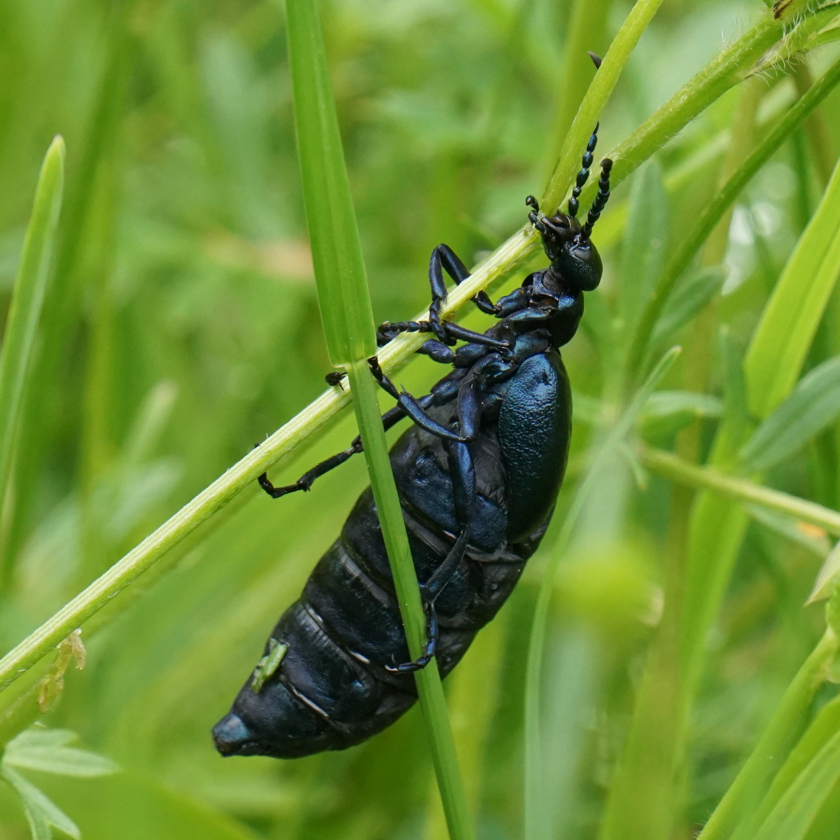
Oil Beetles, also known as Blister Beetles, are named after their defence mechanism, which is a bright orange caustic substance that the creature secretes from its joints. This is highly irritable and can cause blisters on human skin. It is required to deter predators, as the beetle is flightless and slow moving. They are quite easy to identify by their very short elytra (wing cases) which barely cover half the length of the body. They also have a small head and a large fat body.
They belong to the Meloidae family. There are eight native species in the UK although three are now thought to be extinct. The other five are all threatened, having declined drastically due to habitat loss. I haven’t seen one in the UK yet but have come across several in France and Spain. This one was found in the French Pyrenees.
As with most insects they have a fascinating lifecycle. They are parasites of solitary mining bees. The female beetle lays hundreds of eggs in a burrow close to a bee’s nest. Once hatched, the larvae, which are small louse like creatures, climb up onto a flower to wait for a passing bee. It then hooks onto the bee and is carried back to the nest where it climbs off and eats the bee’s eggs and store of pollen. The larva develops in the burrow and finally emerges as an adult.
They start to emerge in March and can be seen through to July. They like to build their burrows in bare earth so are frequently seen on footpaths.
[registration_form]
Thanks Paul, a very interesting animal.
It seems that this Oil Beetle should be co-opted onto our Brexit negotiating team for it certainly knows how to get its cake and eat it.
I have only seen one Oil Beetle in the British Isles and that was in 1989 on the Scottish Island Eilean Shona.Great photograph.